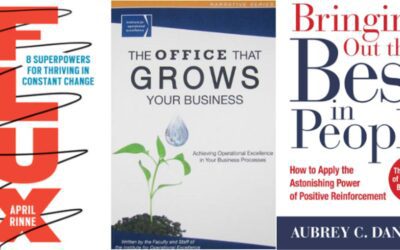The Great Recession ended in 2009 and, despite the growth that has prevailed in the decade since, many middle market business owners have been watching economic trends closely and taking steps to prepare for the time when growth stalls. While overall sentiment for the U.S. economy remains very positive, a recent KeyBank survey of 400 middle market business owners and executives on their expectations surrounding a potential economic downturn found that many believe a downturn is coming and many are taking steps to prepare their businesses.
Is an economic downturn on the way?
69% of middle market companies are expecting an economic downturn in the U.S. in the next two years. More expect it to come later as opposed to sooner, with 31% expecting a downturn in 2019 and 38% expecting it in 2020.
Not surprisingly, most middle market companies expect the next economic downturn to have a negative impact on their business. Only 20% anticipate no impact and another 20% think a downturn could positively impact their business.
Higher-revenue companies (those with annual revenue of $500 million to under $2 billion), as well as those in the Northeast (where there is a higher concentration of upper middle market companies), are more likely than others to expect a positive outcome. So, too, are those in the construction industry.
Despite the fact that 69% of middle market companies expect an economic downturn in the next two years, 48% of executives still have a very good or better economic outlook and 79% have a good or better outlook. Middle market businesses in the $500 million – $4 billion revenue range have a slightly more positive economic sentiment.
How do middle market executives feel about their own businesses?
Interestingly, 79% of middle market business owners and executives remain optimistic about the outlook for their own company over the next 12 months. Considering 69% of companies are expecting an economic downturn no later than 2020, this high level of optimism may speak to the confidence companies have in the actions they have taken to safeguard against a downturn.
Nearly 70% are looking to expand the scope of their operations. Most want to do so through capital expenditures and by hiring more employees. Targeted capital expenditures include major equipment purchases, additional facilities/locations, and the expansion/renovation of current facilities.
Middle market companies are also seeking to expand through acquisitions, with 18% extremely likely to complete an acquisition in the next six months and 23% very likely to complete an acquisition in the next six months.
What are middle market companies doing to safeguard against an economic downturn?
Given that 69% of middle market companies expect a downturn in the next two years, two-thirds are already taking steps to safeguard against it. Most commonly, businesses are looking to reduce expenses and improve operational efficiencies and productivity to counteract potential revenue losses. Some specific actions include employee and benefits reductions and alternate low-cost providers of raw materials.
Companies are also looking to identify new markets and products to offset decreased revenue from their current product and market mix.
Over a third of companies are conserving cash to increase liquidity, thus creating a buffer against a future economic downturn. They are also implementing new cash management solutions that accelerate the cash conversion cycle, improve efficiency, and also increase liquidity.
Higher revenue companies are more proactive about taking action to safeguard against an economic downturn. This level of preparation may partially explain their more positive outlook with respect to the next economic downturn. Construction companies are similarly positive. Their actions to drive efficiency are different, however, with a focus on employee reductions while higher revenue companies are focusing on reducing benefits.
Where we go from here
Despite the fact that 69% of middle market companies expect an economic downturn in the next two years, business owners and executives still have a sense of optimism.
79% have a good or better economic outlook and 70% of middle market companies are expanding through hiring and capital expenditures.
Still, it’s best to hedge your bets. This business reality is reflected by the fact that two-thirds of companies are taking steps, such as improving efficiency and increasing liquidity, to safeguard against a downturn. No matter what happens to the economy, U.S companies will be better off because of the proactive steps they are taking now.
About the authors: Ron Wolfe is vice president and senior relationship manager for KeyBank. He may be reached by phone at 503-554-4183 or email at ron_j_wolfe@keybank.com.
Linda Hamilton is vice president and senior relationship manager for KeyBank. She may be reached by phone at 503-644-1943 or email at linda_r_hamilton@keybank.com.
This material is presented for informational purposes only and should not be construed as individual tax or financial advice. KeyBank does not provide legal advice. KeyBank is Member FDIC. KeyCorp. © 2019. CFMA #190506-580928



